Name Andre Jolivet Role Composer | Music director La France Romane Children Pierre-Alain Jolivet | |
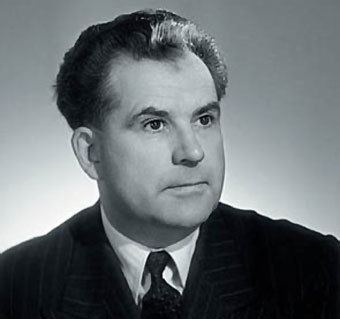 | ||
Compositions Chant de Linos, Chant de Linos, Air de bravoure, Air de bravoure, Petite Suite: II Modere sans trainer, Petite Suite: II Modere sans trainer, Suite en concert (For Flute and Percussion Quartet): 3 Hardiment, Suite en concert (For Flute and Percussion Quartet): 3 Hardiment, Concertino for Trumpet - Piano and String Orchestra: III Allegro, Concertino for Trumpet - Piano and String Orchestra: III Allegro, Concerto pour Flute et Orchestre a Cordes n° 1: II Allegro scherzando, Concerto pour Flute et Orchestre a Cordes n° 1: II Allegro scherzando, Concertino for Trumpet - Piano and String Orchestra, Concertino for Trumpet - Piano and String Orchestra, Heptade: III Cantante, Heptade: III Cantante, Concerto pour violon et orchestre: I Appassionato, Concerto pour violon et orchestre: I Appassionato, Suite en concert pour flute et percussion: II Stabile, Suite en concert pour flute et percussion: II Stabile, Concertino for Trumpet - Piano and String Orchestra: II Meno vivo, Concertino for Trumpet - Piano and String Orchestra: II Meno vivo, Petite Suite: IV Allant, Petite Suite: IV Allant, Trumpet Concerto no 2: I Mesto concitato, Trumpet Concerto no 2: I Mesto concitato, Suite en concert (For Flute and Percussion Quartet): 4 Calme, Suite en concert (For Flute and Percussion Quartet): 4 Calme, Serenade pour deux guitares: I Preludio e canzona, Serenade pour deux guitares: I Preludio e canzona, Cinq incantations pour flute seule: No 5 Aux funerailles du chef — pour obtenir la protection de son ame, Cinq incantations pour flute seule: No 5 Aux funerailles du chef — pour obtenir la protection de son ame, Serenade pour deux guitares: II Allegro trepidante, Serenade pour deux guitares: II Allegro trepidante, Sonatine pour flute et clarinette: I Andantino, Sonatine pour flute et clarinette: I Andantino, Concerto pour violon et orchestre: II Largo, Concerto pour violon et orchestre: II Largo, Concerto pour Flute et Orchestre a Cordes n° 1: IV Allegro risoluto, Concerto pour Flute et Orchestre a Cordes n° 1: IV Allegro risoluto, Heptade: II Vivo, Heptade: II Vivo, Cinq incantations pour flute seule: No 1 Pour accueillir les negociateur — et que l\'entrevue soit pacifique, Cinq incantations pour flute seule: No 1 Pour accueillir les negociateur — et que l\'entrevue soit pacifique, Five Interludes: IV Interlude, Five Interludes: IV Interlude, Mandala, Mandala, Hymne a l\'Univers, Hymne a l\'Univers, Arioso barocco, Arioso barocco, Trumpet Concerto no 2: III Giocoso, Trumpet Concerto no 2: III Giocoso, Concerto pour basson - orchestre a cordes - harpe et piano: III Largo cantabile, Concerto pour basson - orchestre a cordes - harpe et piano: III Largo cantabile, Concerto pour basson - orchestre a cordes - harpe et piano: IV Fugato, Concerto pour basson - orchestre a cordes - harpe et piano: IV Fugato, Concerto pour violon et orchestre: III Allegramente, Concerto pour violon et orchestre: III Allegramente, Heptade: I Allegro, Heptade: I Allegro, Heptade: VII Vivo e ritmico, Heptade: VII Vivo e ritmico, Concerto pour basson - orchestre a cordes - harpe et piano: II Allegro gioviale, Concerto pour basson - orchestre a cordes - harpe et piano: II Allegro gioviale, Petite Suite: V ♩ = 112, Petite Suite: V ♩ = 112, Serenade pour deux guitares: III Andante malinconico, Serenade pour deux guitares: III Andante malinconico, Chant pour les piroguiers de l\'Orenoque, Chant pour les piroguiers de l\'Orenoque, Concerto pour Flute et Orchestre a Cordes n° 1: III Largo, Concerto pour Flute et Orchestre a Cordes n° 1: III Largo, Petite Suite: III Vivement, Petite Suite: III Vivement, Sonatine pour flute et clarinette: II Quasi cadenza, Sonatine pour flute et clarinette: II Quasi cadenza, Five Interludes: III Interlude, Five Interludes: III Interlude, Five Interludes: I Introduction, Five Interludes: I Introduction, Five Interludes: V Conclusion, Five Interludes: V Conclusion, Trumpet Concerto no 2: II Grave, Trumpet Concerto no 2: II Grave, Cinq incantations pour flute seule: No 2 Pour que l\'enfant qui va naitre soit un fils, Cinq incantations pour flute seule: No 2 Pour que l\'enfant qui va naitre soit un fils, Petite Suite: I Prelude: Modere, Petite Suite: I Prelude: Modere, Concerto pour Flute et Orchestre a Cordes n° 1: I Andante cantabile, Concerto pour Flute et Orchestre a Cordes n° 1: I Andante cantabile, Concerto pour basson - orchestre a cordes - harpe et piano: I Recitativo, Concerto pour basson - orchestre a cordes - harpe et piano: I Recitativo, Heptade: V Maestoso, Heptade: V Maestoso, Cinq incantations pour flute seule: No 3 Pour que la moisson soit riche qui naitra des sillons que le laboureur trace, Cinq incantations pour flute seule: No 3 Pour que la moisson soit riche qui naitra des sillons que le laboureur trace, Heptade: IV Vehemente, Heptade: IV Vehemente, Incantation "Pour que l\'image devienne symbole", Incantation "Pour que l\'image devienne symbole" Similar People Henri Tomasi, Maurice Andre, Olivier Messiaen, Francis Poulenc, Jean Francaix | ||
A portrait of the composer andr jolivet
André Jolivet ([ɑ̃'dʁe ʒoli've], 8 August 1905 – 20 December 1974) was a French composer. Known for his devotion to French culture and musical thought, Jolivet drew on his interest in acoustics and atonality, as well as both ancient and modern musical influences, particularly on instruments used in ancient times. He composed in a wide variety of forms for many different types of ensembles.
Contents
- A portrait of the composer andr jolivet
- Andr jolivet concerto pour percussion
- Life
- Private life
- Death
- Career
- Chamber music
- Concertos
- Orchestral music
- Songs
- Sacred music
- Ballets
- Operas
- References
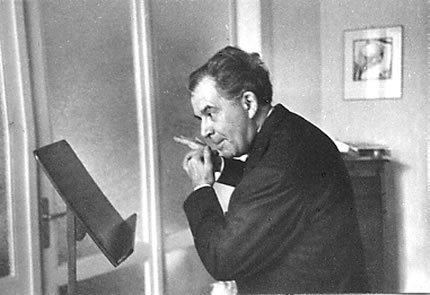
Andr jolivet concerto pour percussion
Life
André Jolivet was born on 8 August 1905, at rue Versigny in Montmartre, Paris, the son of Victor-Ernest Jolivet and Madeleine Perault; his father an artist, his mother a pianist. Jolivet developed an interest in the arts early in his life, taking up painting and cello lessons at the age of 14. However, he was encouraged by his parents to become a teacher, going to teachers' college and teaching primary school in Paris (taking three years in between to serve in the military). One of his own teachers, however, believed Jolivet had a future in music, strongly encouraged him to pursue composition, and introduced him to Paul Le Flem, Jolivet's first teacher in composition. Le Flem gave Jolivet a firm grounding in classical forms of harmony and counterpoint. After hearing his first concert of Arnold Schoenberg, Jolivet became interested in atonal music, and then on Le Flem's recommendation became the only European student of Edgard Varèse, who passed on his knowledge of musical acoustics, atonal music, sound masses, and orchestration. In 1936 Jolivet co-founded the group La jeune France along with composers Olivier Messiaen, Daniel-Lesur, and Yves Baudrier, who were attempting to re-establish a more human and less abstract form of composition. La jeune France developed from the avant-garde chamber music society La Spirale, formed by Jolivet, Messiaen, and Lesur the previous year.
Private life

Jolivet married twice, firstly violinist Martine Barbillion in 1929; they had a daughter, Francoise-Martine (1930–2004). In 1933, he married Hilda Ghuighui (also spelt Guigue) (1906–1996), and they had three children, Pierre-Alain (1935–2005), Christine (b. 1940), and Merri (b. 1943).
Death
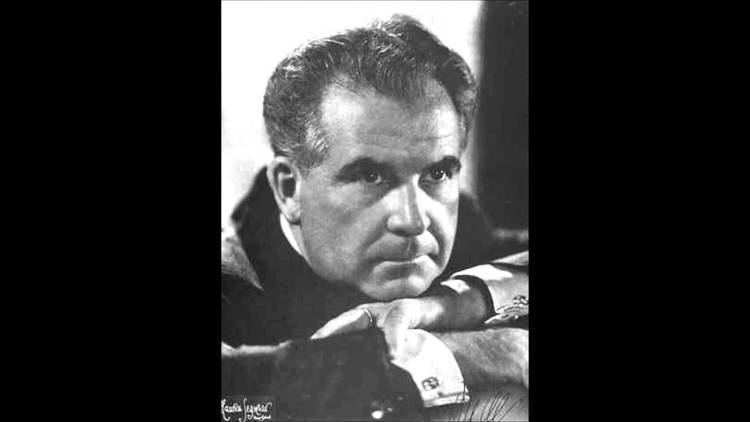
Jolivet died in Paris in 1974 aged 69, leaving unfinished his opera Le Soldat inconnu. He was buried at Montmartre Cemetery next to the composer Henri Sauguet (Section 27, near the grave of Hector Berlioz).
Career
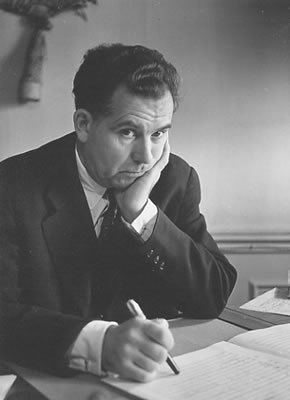
Jolivet's aesthetic ideals underwent many changes throughout his career. His initial desire as an adolescent was to write music for the theater, which inspired his first compositions, including music for a ballet. Claude Debussy, Paul Dukas, and Maurice Ravel were to be his next influences after he heard a concert of their work in 1919; he composed several piano pieces while training to become a teacher before going to study with Le Flem. Schoenberg and Varèse were strongly evident in his first period of maturity as a composer, during which his style drew heavily upon atonality and modernistic ideas. Mana (1933), the beginning of his "magic period", was a work in six parts for piano, with each part named after one of the six objects Varèse left with him before moving to the United States. Jolivet's intent as a composer throughout his career was to "give back to music its original, ancient meaning, when it was the magical, incantatory expression of the religious beliefs of human groups." Mana, even as one of his first mature works, is a reflection of this; Jolivet considered the sculptures as fetish objects. His further writing continues to seek the original meanings of music and its capacity for emotional, ritual, and celebratory expression.
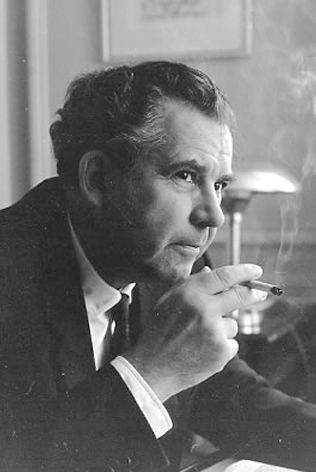
In 1945 he published a paper declaring that "true French music owes nothing to Stravinsky", though both composers drew heavily upon themes of ancient music in their work; Jolivet and La jeune France rejected neoclassicism in favor of a less mechanical and progressive and instead a more spiritual style of composition. Later, during World War II, Jolivet shifted away from atonality and toward a more tonal and lyrical style of composition. After a few years of working in this more simplistic style, during which time he wrote the comic opera Dolorès, ou Le miracle de la femme laide (1942) and the ballet Guignol et Pandore (1943), he arrived at a compromise between this and his earlier more experimental work. The First Piano Sonata, written in 1945, shows elements of both these styles.
Finally realizing his youthful ambition to write for the theater, Jolivet became the musical director of the Comédie Française in 1945, a post he held until 1959. While there he composed for plays by Molière, Racine, Sophocles, Shakespeare, and Claudel, scoring 14 works in total. He also continued to compose for the concert hall, often inspired by his frequent travels around the world, adapting texts and music from Egypt, the Middle East, Africa, and Asia into his distinctly French style.
During the 1950s and 1960s, Jolivet wrote several concertos for a variety of instruments including trumpet, piano, flute, harp, bassoon, percussion, cello, and violin. These works, while highly regarded, all demand virtuosic technical skill from the performers. Jolivet is also one of the few composers to write for the ondes Martenot, an early electronic instrument, completing a concerto for it in 1947, 19 years after the instrument's invention. Jolivet founded the Centre Français d'Humanisme Musical at Aix-en-Provence in 1959, and in 1961 went to teach composition at the Paris Conservatoire.
